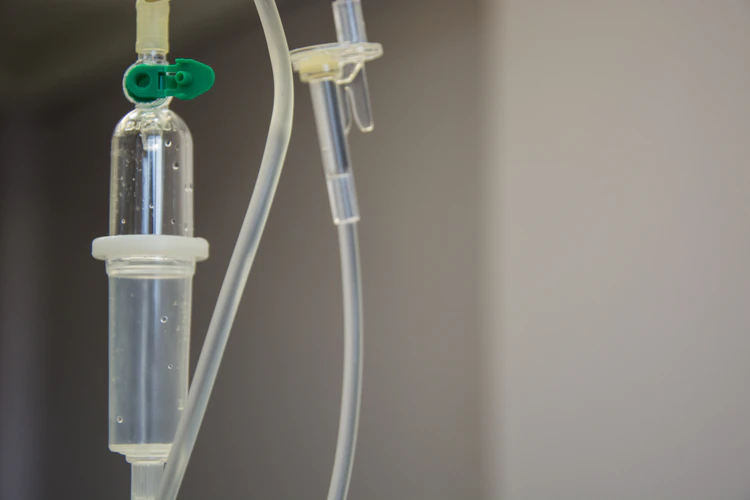Exploring the World of X-Ray Tools: Applications and Innovation
273
0
·
2023/10/18
·
4 mins read
☕
WriterShelf™ is a unique multiple pen name blogging and forum platform. Protect relationships and your privacy. Take your writing in new directions. ** Join WriterShelf**
WriterShelf™ is an open writing platform. The views, information and opinions in this article are those of the author.
Article info
Tags:
Total: 909 words
Like
or Dislike
More to explore










Introduction
X-ray tools have come a long way since their discovery over a century ago. Originally used to peer inside the human body, today, these tools are employed across various industries and disciplines, pushing the boundaries of what they can achieve. In this article, we will delve into the world of X-ray Tools, exploring their diverse applications and the innovative developments that continue to shape the field.
The Evolution of X-ray Tools
Today, X-ray tools are indispensable in fields ranging from healthcare to security, manufacturing, and archaeology. Let's take a closer look at how these tools have evolved.
1. Medical Imaging
X-ray machines remain a cornerstone of medical diagnostics. They allow healthcare professionals to visualize the inside of the human body, aiding in the detection and diagnosis of various conditions. Traditional X-ray imaging, computed tomography (CT), and fluoroscopy are some of the key applications in the medical field.
2. Security Screening
X-ray technology plays a crucial role in airport security and border control. Baggage and cargo scanners use X-rays to identify potential threats by creating detailed images of their contents. These tools are essential for ensuring public safety.
3. Industrial Inspection
In manufacturing, X-ray tools are vital for quality control. They help identify defects, inconsistencies, or foreign objects in products like electronics and automotive components. Non-destructive testing (NDT) techniques such as industrial radiography and computed tomography are widely used.
4. Archaeology and Art Conservation
X-ray tools are invaluable in the preservation and study of historical artifacts. Archaeologists use portable X-ray machines to explore the interiors of ancient objects without causing damage. Art conservators employ X-rays to examine paintings and sculptures for hidden details and structural integrity.
5. Research and Material Analysis
Scientists and researchers utilize X-ray diffraction and X-ray fluorescence techniques for material analysis. These methods provide insights into the composition, structure, and properties of various materials, including metals, minerals, and biological samples.
6. Dental Imaging
Dental X-rays have revolutionized oral healthcare. They allow dentists to visualize dental problems and plan treatments with high precision. Digital X-ray technology has reduced radiation exposure and improved imaging quality.
Innovations in X-ray Tools
The evolution of X-ray tools has been marked by continuous innovation. Here are some of the notable advancements that have propelled the field forward:
1. Digital Radiography (DR)
Traditional film-based X-rays have largely been replaced by digital radiography. Digital systems offer immediate image capture, reduced radiation exposure, and easy storage and sharing of images, making them more efficient and environmentally friendly.
2. Dual-Energy X-ray Imaging
Dual-energy X-ray imaging combines two X-ray spectra to provide enhanced tissue differentiation and improved detection of abnormalities, particularly in medical imaging.
3. Cone Beam CT
Cone Beam Computed Tomography (CBCT) is a variation of CT scanning that provides high-resolution 3D images, primarily used in dental and maxillofacial applications. It offers detailed anatomical information with lower radiation exposure.
4. Synchrotron Radiation
Synchrotron facilities produce exceptionally brilliant X-rays for advanced research applications. They are used in structural biology, material science, and environmental research, providing detailed insights into complex structures at the molecular level.
5. Portable X-ray Machines
Portable X-ray devices have become smaller and more versatile, allowing for on-site inspections in various fields, from construction to archaeology. These tools are highly efficient and minimize the need to transport large objects to centralized facilities.
6. Quantum Dots for Imaging
Quantum dots, nanoscale semiconductor particles, are being explored for their potential in X-ray imaging. They offer enhanced image contrast and can be targeted to specific tissues, opening new possibilities in medical diagnostics.
Applications in Healthcare
X-ray tools are a cornerstone of modern medicine, offering diagnostic capabilities that have transformed patient care. They are used in various medical scenarios:
1. Radiography
Conventional X-ray radiography is widely used for imaging bones and detecting fractures, dislocations, and joint issues.
2. Computed Tomography (CT)
CT scans are highly detailed and provide cross-sectional images of the body, enabling the visualization of soft tissues and the identification of abnormalities like tumors and blood clots.
3. Fluoroscopy
Fluoroscopy involves real-time X-ray imaging, which is crucial for procedures such as angiography, where the flow of blood vessels is monitored.
4. Mammography
Mammography uses X-ray technology to detect breast cancer in its early stages. Digital mammography has improved image quality and reduced radiation exposure.
5. Interventional Radiology
X-ray guidance is essential in minimally invasive procedures such as angioplasty and stent placement, where precision is critical.
6. Radiotherapy
X-ray tools are also used in cancer treatment. High-energy X-rays can be precisely targeted to destroy cancer cells while sparing healthy tissue.
Safety Considerations
While X-ray tools have revolutionized many fields, it's essential to recognize the importance of safety. Proper training, regulation, and safety protocols are critical in all applications of X-ray technology. This ensures that radiation exposure is minimized, and the benefits of X-ray tools are realized without unnecessary risks.
Conclusion
X-ray tools have traversed a remarkable journey from their discovery to becoming indispensable in various fields, ranging from healthcare to security, industry, archaeology, and research. With ongoing innovations in digital technology, portability, and specialized applications, X-ray tools continue to transform the way we explore the world around us, enabling us to peer inside the human body, uncover hidden details in historical artifacts, ensure product quality, and conduct cutting-edge research. As we move forward, it's crucial to balance the benefits of X-ray tools with a steadfast commitment to safety and responsible use, ensuring that these powerful tools continue to improve our lives and expand our understanding of the world.